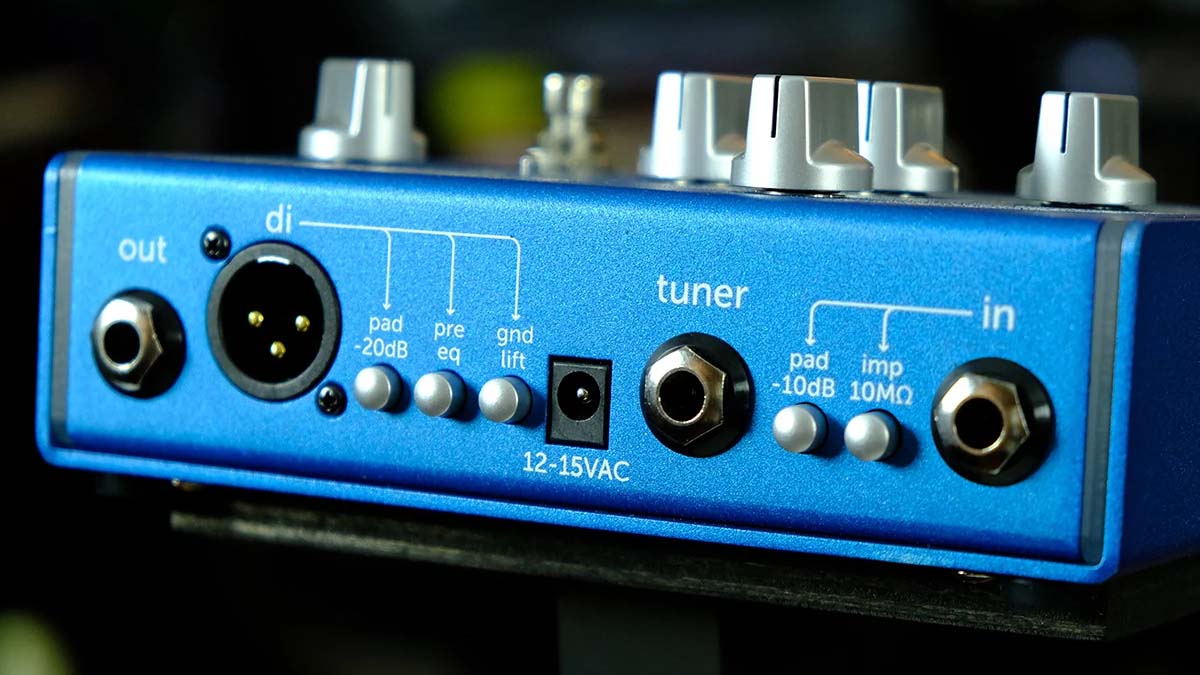Guitar World Verdict
A vital new addition to the ranks of the bass preamp pedal.
Pros
- +
Pristine studio quality sound.
- +
Sturdy pedal format.
Cons
- -
May not offer radical enough tone shaping for some.
- -
Very heavy.
You can trust Guitar World
Bass preamps are all the rage right now – whether it’s because of the passive pickup trend, or because we’re just realizing that it’s easier to have one preamp for multiple basses than to have one installed in every bass, preamp pedals are all over the place.
What makes the Starlifter – released under Carey Nordstrand’s ‘Rocket Surgeon Effect Pedal Laboratory’ imprint – most interesting is the company’s existing pedigree for great bass tone. Nordstrand pickups are widely loved, and their onboard preamps are featured in some pretty high end basses. So let’s get stuck in!
The Starlifter makes a formidable first impression, thanks to its considerable size and weight. This is no onboard preamp in a funky casing, something perhaps most evident by its need for a 15V AC power supply. The Starlifter clearly sits at the studio-sound end of the preamp spectrum, an observation borne out by the range of controls on offer.
The input has switches for both a -10dB pad and between 1MΩ and 10MΩ, to accommodate magnetic pickups and piezo-style upright bass pickups. For the output there’s an XLR DI out with a ground lift and a -20dB pad as well as a pre-EQ option, and a jack out for your amp or to connect to the rest of your signal chain.

The versatility of the Starlifter makes it ideal as a front end to a more complex pedal setup, allow you to fine-tune your sound and volume before hitting the rest of your pedals, while also recording a clean signal for future tweaking or blending. The output section also features a tuner out that stays on when the mute switch is engaged for silent on-stage tuning.
When we get to the tone controls, we find ourselves in familiar territory with the three-band bass/mid/treble arrangement. The mid control is coupled to a mid frequency sweep, and for further tonal variation there’s a three position ‘contour’ switch. Labeled ‘vintage’, ‘off’ and ‘modern’, they offer no surprises, just a really useful jump between a more old school bass-heavy tone and a modern mid scooped tone, or the neutral sound of the preamp.
Nordstrand haven’t gone for any kind of signature tone imprint here, just a really well-chosen lean in two directions that you can then shape further with EQ. So good are the two options that I found myself wishing there was a footswitch jack for quicker access – the ‘modern’ tone gave possibly the most useable slap preset EQ I’ve ever encountered, and the ‘vintage’ option very successfully took the edge off the sheen of an active bass without the tone getting lost or requiring further EQ adjustment.
All the latest guitar news, interviews, lessons, reviews, deals and more, direct to your inbox!
The volume control is an output level control for the jack out only, meaning that the DI section just operates like a standard studio DI, with the option to engage or bypass the EQ.
There’s a massive amount of gain available, enough to connect the Starlifter direct to a power amp and use as the entire tone-shaping set-up for your bass if you favor a precise, unprocessed sound. Indeed, the absence of any further tone shaping or input gain/drive control reveals the intentions of the Starlifter – clean, precise tonal control in a robust, studio‑quality package.
The two footswitches are self-explanatory – a mute switch and an ‘engage’ switch that turns the EQ on and off. The volume control functions whether or not the EQ is in, which makes sense given the amount of gain on offer – switching between a bypassed level and the preamp level would only be of use in a very small number of situations, making the EQ on/off far more useful.
The engage switch also bypasses the contour, so with it disengaged you just get clean boost. The light rails down either side of the pedal indicate the current state – red for mute and green when the EQ is engaged.

‘Clean’ is a word that comes to mind a lot when playing with the Starlifter – everything about it screams quality and precision. The choices of center frequency and the slope for each of the EQ bands offer a huge range of usable tones, even at the extremes of each control – crank the treble all the way up and the sound sparkles rather than becoming harsh.
Turn the bass up full, and so long as it doesn’t overload anything further down the signal chain, you’ve got tons of stadium-shaking, clear low end without encroaching on your mids and highs. Not surprisingly, it feels a lot like using a good studio preamp, with no sense of corners having been cut.
The Starlifter isn’t cheap, but for the quality it offers, it’s surprisingly affordable. The weight could also be an issue if your normal mode of getting to gigs is flying with your pedalboard in your hand luggage. For almost every other situation, Nordstrand’s contribution to the preamp pedal world is a welcome one that’s sure to fit the bill for many players in myriad situations.
Specs
- PRICE: $349 / £285
- MADE IN: USA
- CONTROLS: Mute, Engage, Volume, Contour, Treble, Mid, Mid Frequency, Bass
- FEATURES: Switchable impedance on the input for electric/upright bass, -20dBpad and pre/post EQ DI out
- POWER: 15V AC power adaptor (included)
- DIMENSIONS: 165 x 101 x 44mm
- WEIGHT: 2.5 lbs
- CONTACT: Nordstrand Audio

